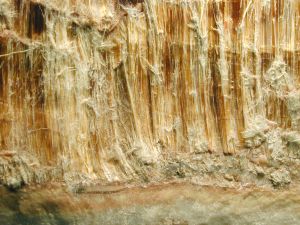Our Boston mesothelioma plaintiff lawyers understand that asbestos-related illness cases can involve complex litigation to determine which of many possible defendants are responsible for the plaintiff’s injuries.
 In Bostic v. Georgia-Pacific Corp., an appeal from the Supreme Court of Texas, the plaintiff was diagnosed with mesothelioma. He was diagnosed with the disease in 2002 and died the following year. Mesothelioma is a form of lung cancer that is most often caused by breathing in asbestos fibers.
In Bostic v. Georgia-Pacific Corp., an appeal from the Supreme Court of Texas, the plaintiff was diagnosed with mesothelioma. He was diagnosed with the disease in 2002 and died the following year. Mesothelioma is a form of lung cancer that is most often caused by breathing in asbestos fibers.
According to the record, the plaintiff was exposed as a child to asbestos in the form of a drywall compound manufactured by the named-defendant. The case went to trial and the jury found that the defendant was liable for the injuries to the plaintiff.
The jury was also asked to make a determination of causation between numerous companies. This is common in asbestos litigation. It is often impossible to determine who manufactured the actual asbestos that injured a particular plaintiff. In fact, there were many companies who made asbestos during its heyday, when it was marketed as a sort of miracle insulation material.
When someone is diagnosed with mesothelioma, usually many years after exposure to asbestos, a court will look at which companies were manufacturing the material during the time period when the plaintiff came in contact with it and what the market share was at that time for each respective company. If one company made 40 percent of the asbestos during that time period, for example, that company would be liable for 40 percent of the damages.
In Bostic, the named defendant and 39 other companies were involved in the suit, as well as the plaintiff’s former employer. The jury determined that the employer was 25 percent liable and the named defendant was 75 percent liable. The jury awarded approximately $6.8 million in compensatory damages and $4.8 million in punitive damages.
The defendant filed a motion to overturn the jury’s verdict on grounds that there was insufficient evidence to support the jury’s finding. The judge granted this motion, and the plaintiff appealed.
On appeal, the court looked at the required elements of proof in a mesothelioma case and whether the court overstepped its bounds in reversing the jury verdict. The question at hand is whether there was enough evidence for a reasonable juror to make a reasonable finding that the defendant’s conduct was negligent and that that negligent act caused the plaintiff’s injury.
There are two types of causation in our legal system in negligence cases. The first type is called actual causation. This means that an injury would not have happened “but for” the defendant’s negligent conduct. This sounds confusing, but it basically means that an injury would not have happened had it not been for the defendant’s negligence. For example, if someone negligently injures you in car accident and it causes you to lose a leg, and then 10 years later, that leg injury causes you fall down a flight of stairs, would the person who hit you be responsible for the fall? Under an actual causation test, the answer is yes.
However, the next test is whether the defendant’s negligence was the proximate cause of the plaintiff’s injury. In other words, was it foreseeable and close enough in time that the car accident would cause the fall 10 years later? The answer is probably no.
In Bostic, the appeals court determined that it was reasonable for the jury to make a finding that the defendant’s asbestos was the actual and proximate cause of the plaintiff’s injury.
If you or a loved one is diagnosed with mesothelioma in Boston, call for a free and confidential appointment at (617) 777-7777.
Additional Resources:
Bostic v. Georgia-Pacific Corp., July 11, 2014, Supreme Court of Texas
More Blog Entries:
Union Carbide Corp. v. Nix – Court Reverses Claim for Punitive Damages, June 30, 2014, Mesothelioma Lawyers Blog
 Mesothelioma Lawyers Blog
Mesothelioma Lawyers Blog

